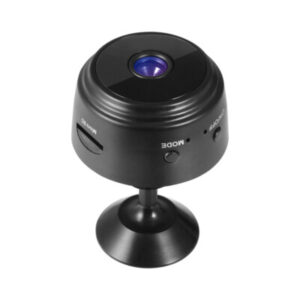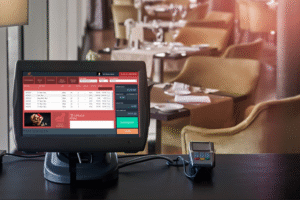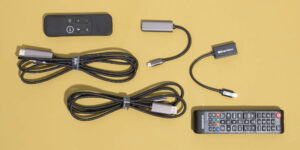eInvoice Software Price: A Comprehensive Guide to Understanding Costs and Making the Right Choice
In today’s fast-paced digital world, businesses are increasingly adopting electronic invoicing (eInvoicing) to streamline their billing processes, reduce errors, and...

In today’s fast-paced digital world, businesses are increasingly adopting electronic invoicing (eInvoicing) to streamline their billing processes, reduce errors, and save time. However, one of the most common questions businesses have when considering eInvoice software is: “How much does e invoice software price ?”
The price of eInvoice software can vary widely depending on several factors, including the features you need, the size of your business, and the provider you choose. In this article, we’ll break down everything you need to know about eInvoice software pricing, so you can make an informed decision that fits your budget and business needs.
What is eInvoice Software?
Before diving into the costs, let’s briefly explain what eInvoice software is. eInvoice software is a digital tool that allows businesses to create, send, and manage invoices electronically. It eliminates the need for paper-based invoicing, making the process faster, more efficient, and environmentally friendly.
Key features of eInvoice software often include:
- Automated invoice generation
- Customizable invoice templates
- Integration with accounting software
- Real-time tracking of invoice status
- Secure payment gateways
- Compliance with tax regulations
Now that we’ve covered the basics, let’s explore the factors that influence eInvoice software pricing.
Factors That Affect eInvoice Software Pricing
1. Type of Pricing Model
eInvoice software providers typically offer different pricing models. Understanding these models can help you choose the one that best suits your business needs.
- Subscription-Based Pricing: Most eInvoice software operates on a monthly or annual subscription model. Prices can range from
- 10to
- 10to100+ per month, depending on the features and number of users.
- Pay-Per-Use Pricing: Some providers charge based on the number of invoices you send. This can be a cost-effective option for small businesses with low invoicing volumes.
- One-Time Purchase: A few providers offer a one-time purchase option, where you pay a lump sum to own the software outright. However, this is less common and may not include updates or support.
- Freemium Model: Some providers offer a free version with basic features, with the option to upgrade to a paid plan for advanced functionality.
2. Business Size and Needs
The size of your business and your invoicing needs play a significant role in determining the cost. For example:
- Small Businesses: If you’re a small business with limited invoicing needs, you may only require basic features, which are often available at a lower cost.
- Medium to Large Businesses: Larger businesses with higher invoicing volumes and more complex needs may require advanced features like multi-user access, integration with ERP systems, and custom reporting, which can increase the price.
3. Features and Functionality
The more features you need, the higher the cost. Here are some common features that can impact pricing:
- Automation: Automated invoice generation and reminders can save time but may come at a higher price.
- Integration: Integration with accounting software like QuickBooks, Xero, or FreshBooks can add to the cost.
- Customization: Customizable invoice templates and branding options may also increase the price.
- Security: Advanced security features like encryption and compliance with tax regulations can add to the cost but are essential for protecting sensitive data.
4. Number of Users
Some eInvoice software providers charge based on the number of users. If you have a large team that needs access to the software, this can significantly impact the overall cost.
5. Customer Support and Training
Providers that offer 24/7 customer support, onboarding, and training may charge higher fees. However, this can be a worthwhile investment if you need assistance getting started or troubleshooting issues.
Average Cost of eInvoice Software
To give you a better idea of what to expect, here’s a breakdown of the average costs based on different business sizes and needs:
1. Small Businesses
- Price Range:
- 10to
- 10to30 per month
- Features: Basic invoicing, limited users, standard templates, and integration with popular accounting software.
- Examples: FreshBooks, Zoho Invoice, and Wave.
2. Medium-Sized Businesses
- Price Range:
- 30to
- 30to70 per month
- Features: Advanced invoicing, multi-user access, custom templates, and integration with ERP systems.
- Examples: QuickBooks Online, Xero, and Invoice2go.
3. Large Enterprises
- Price Range:
- 70to
- 70to200+ per month
- Features: Enterprise-level features like advanced reporting, API access, and dedicated customer support.
- Examples: SAP Ariba, Coupa, and Tipalti.
Hidden Costs to Watch Out For
While the upfront cost of e invoice software price is important, it’s also essential to consider any hidden costs that may arise. These can include:
- Setup Fees: Some providers charge a one-time setup fee to get your account up and running.
- Transaction Fees: If the software includes payment processing, there may be transaction fees for each payment received.
- Add-Ons: Additional features like advanced reporting or custom integrations may come at an extra cost.
- Training Costs: If your team requires training to use the software effectively, this could add to the overall expense.
How to Choose the Right eInvoice Software for Your Budget
With so many options available, choosing the right eInvoice software can be overwhelming. Here are some tips to help you make the best decision:
1. Assess Your Needs
Start by identifying your business’s specific invoicing needs. Do you need basic features, or do you require advanced functionality like automation and integration? Understanding your needs will help you narrow down your options.
2. Compare Pricing Plans
Once you’ve identified your needs, compare the pricing plans of different providers. Look for a plan that offers the features you need at a price that fits your budget.
3. Read Reviews and Testimonials
Reading reviews and testimonials from other users can give you valuable insights into the software’s performance, reliability, and customer support.
4. Take Advantage of Free Trials
Many eInvoice software providers offer free trials. Take advantage of these to test the software and see if it meets your needs before committing to a purchase.
5. Consider Scalability
Choose a software that can grow with your business. If you anticipate your invoicing needs will increase in the future, opt for a provider that offers scalable pricing plans.
Top eInvoice Software Providers and Their Pricing
To help you get started, here’s a list of some popular eInvoice software providers and their pricing:
1. FreshBooks
- Price: Starts at $15/month
- Features: Automated invoicing, time tracking, expense management, and integration with popular accounting software.
- Best For: Small businesses and freelancers.
- Website: FreshBooks
2. QuickBooks Online
- Price: Starts at $25/month
- Features: Advanced invoicing, expense tracking, payroll, and integration with over 650 apps.
- Best For: Small to medium-sized businesses.
- Website: QuickBooks Online
3. Xero
- Price: Starts at $12/month
- Features: Customizable invoices, bank reconciliation, and integration with over 800 apps.
- Best For: Small to medium-sized businesses.
- Website: Xero
4. Zoho Invoice
- Price: Free for up to 5 customers; paid plans start at $9/month
- Features: Time tracking, project management, and integration with Zoho’s suite of business tools.
- Best For: Small businesses and freelancers.
- Website: Zoho Invoice
5. Wave
- Price: Free (with optional paid add-ons)
- Features: Unlimited invoicing, receipt scanning, and basic accounting features.
- Best For: Small businesses and startups.
- Website: Wave
Conclusion: Is eInvoice Software Worth the Investment?
The cost of eInvoice software can vary widely, but the benefits often outweigh the expense. By automating your invoicing process, you can save time, reduce errors, and improve cash flow. When choosing eInvoice software, it’s essential to consider your business’s specific needs, compare pricing plans, and take advantage of free trials to find the best fit.






